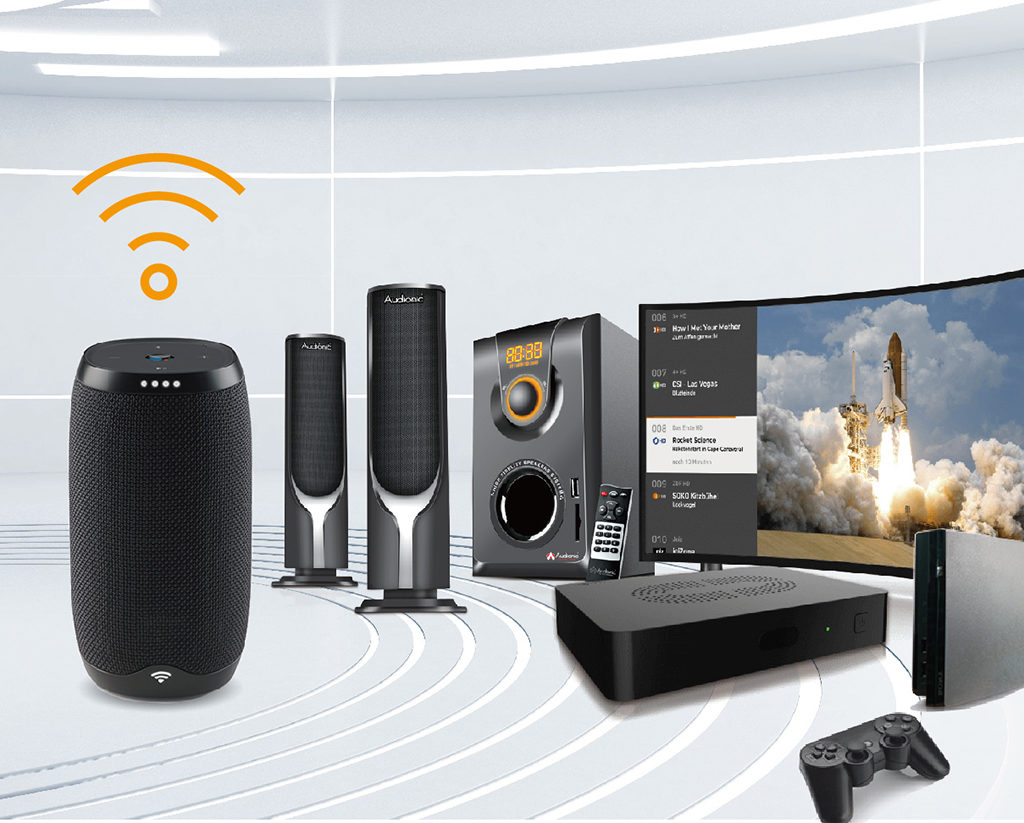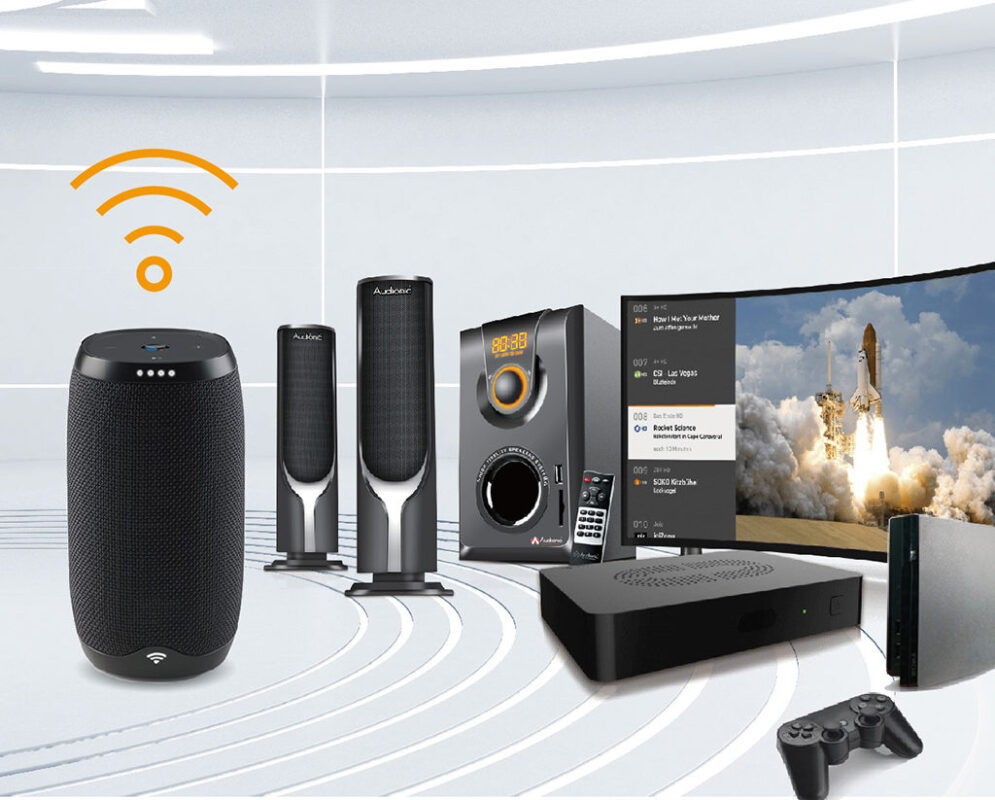Smart Home Entertainment: Transforming Your Living Space into a High-Tech Entertainment Hub

The future of home entertainment has arrived, and it’s smarter, more immersive, and more connected than ever. With the rapid advancements in smart home technology, creating a personalized and efficient entertainment setup at home is easier than before. From voice-controlled assistants to integrated home theaters, smart entertainment solutions offer more convenience, quality, and flexibility. Whether you’re binge-watching your favorite series, enjoying a home theater experience, or hosting a movie night, smart home entertainment systems bring a new level of convenience, comfort, and control.
In this article, we will dive deep into what smart home entertainment is, how it works, its benefits, and how to set up a smart entertainment system that enhances your home experience. Let’s explore this innovative world of technology.
What Is Smart Home Entertainment?
Smart home entertainment refers to any home technology that uses internet connectivity to improve entertainment experiences. This includes devices like smart TVs, streaming devices, sound systems, and even smart lighting systems that integrate with your entertainment setup. These systems can be controlled remotely using smartphones, voice assistants, or automated routines to create seamless, immersive experiences.
Smart entertainment systems go beyond simple entertainment. They provide enhanced usability, automation, and integration with other smart home devices like lighting, security, and climate control, making your entire home more intuitive and efficient.
How Does Smart Home Entertainment Work?
The essence of smart home entertainment lies in its integration with the broader ecosystem of smart devices in your home. Here’s how these systems typically function:
1. Smart TVs and Streaming Devices
At the heart of any smart entertainment setup is the smart TV or streaming device. These devices connect to the internet and provide access to content through apps like Netflix, Hulu, YouTube, and others. Some of the most popular smart TVs come with built-in streaming services, while others can be connected to external devices like Roku, Amazon Fire Stick, or Apple TV.
Key Features of Smart TVs:
- Built-in Wi-Fi: Connects to the internet for streaming.
- App Integration: Access to streaming services and apps.
- Voice Control: Integration with voice assistants like Amazon Alexa or Google Assistant.
2. Smart Sound Systems
A smart sound system enhances your viewing experience with high-quality audio and integrated features. These systems allow you to control the volume, sound modes, and even link multiple speakers together for surround sound.
Popular options include Sonos, Bose, and Bang & Olufsen. These systems connect via Wi-Fi or Bluetooth and can be controlled using a smartphone app or voice commands.
3. Voice Assistants
Integrating voice assistants like Amazon Alexa, Google Assistant, or Apple Siri can transform your home entertainment experience. These assistants can turn on your TV, adjust volume, play your favorite music, or even change the lighting to set the mood for a movie. By simply saying, “Alexa, play a movie,” or “Hey Google, dim the lights,” you can control multiple devices at once.
4. Smart Lighting for Enhanced Ambiance
Smart lighting can significantly enhance your entertainment experience. By connecting smart lights like Philips Hue or LIFX to your TV or streaming system, you can sync the lights with the content you’re watching. For example, the lights can change color or intensity based on the scene in a movie, enhancing immersion and setting the perfect ambiance.
Benefits of Smart Home Entertainment Systems
Integrating smart entertainment devices into your home offers numerous advantages, including convenience, energy efficiency, and an enhanced user experience. Here’s a closer look at the benefits:
1. Enhanced User Experience
With smart entertainment, you can easily control your entire entertainment system from a single device or app. Whether you want to adjust the lighting, control the volume, or search for content, you can do it all seamlessly, improving your overall experience.
2. Seamless Integration
Smart entertainment systems integrate effortlessly with other smart home devices, such as thermostats, security cameras, and voice-controlled assistants. This creates a connected home where everything works in harmony, giving you more control and automation over your environment.
For instance, you can set routines like “Movie Night,” where your smart lights dim, your TV turns on, and your sound system powers up with a single voice command.
3. Personalization and Convenience
You can tailor your entertainment setup to your specific preferences. Want to create a movie-watching environment with dimmed lights and a cozy temperature? Or perhaps set up a music playlist for a party? Smart entertainment systems allow for personalization, making it easier to enjoy your home entertainment exactly the way you like.
4. Energy Efficiency
Smart entertainment systems help save energy by ensuring that devices are only used when necessary. For example, with smart plugs, you can schedule when to power your devices on or off, preventing energy waste. Additionally, many smart TVs and sound systems come with energy-saving modes, reducing consumption during periods of inactivity.
Popular Smart Home Entertainment Devices
When it comes to building a smart home entertainment system, there are a variety of devices you can choose from. Here are some of the most popular ones:
1. Smart TVs
- LG OLED C1 Series: Known for its vibrant display and smart features, this TV is a favorite among smart entertainment enthusiasts.
- Samsung QLED 4K Smart TV: With excellent picture quality and easy integration with smart devices, Samsung’s smart TVs offer a premium experience.
2. Streaming Devices
- Amazon Fire Stick: A budget-friendly option for streaming all your favorite shows and movies.
- Google Chromecast: Allows you to cast content directly from your phone to your TV.
- Apple TV 4K: Offers high-quality streaming with Apple’s user-friendly interface and tight integration with other Apple devices.
3. Smart Sound Systems
- Sonos Beam: A compact soundbar that offers great sound and integrates seamlessly with other smart devices.
- Bose SoundTouch: Known for delivering rich, high-quality sound and easy integration with streaming services.
4. Smart Speakers
- Amazon Echo: A versatile speaker that not only plays music but also integrates with your smart entertainment system for voice control.
- Google Nest Audio: Provides high-quality sound and integrates well with Google-based smart home setups.
How to Set Up a Smart Home Entertainment System
Setting up a smart home entertainment system is easier than ever. Here’s a step-by-step guide to help you get started:
Step 1: Choose Your Devices
Start by selecting the smart devices you want to incorporate into your entertainment system. This could include a smart TV, streaming device, sound system, and voice assistant.
Step 2: Connect Devices to Your Wi-Fi Network
Ensure that your devices are connected to your home Wi-Fi network. Most smart entertainment devices come with easy-to-follow setup instructions for this step.
Step 3: Install the Necessary Apps
Download the corresponding apps for each device on your smartphone or tablet. For example, if you’re using a Sonos sound system, download the Sonos app to control the speakers. Similarly, use the Google Home app or Amazon Alexa app to manage voice commands.
Step 4: Customize and Automate
Once everything is connected, it’s time to customize and automate your system. Set up routines, link your devices with voice assistants, and personalize the settings to suit your needs.
Step 5: Enjoy Your Entertainment
With everything in place, you’re ready to enjoy your smart entertainment system. Simply ask your voice assistant to play your favorite show, adjust the lighting, and relax in your personalized, high-tech entertainment space.
FAQs about Smart Home Entertainment
Q1: What devices do I need for a smart home entertainment system?
A1: At a minimum, you’ll need a smart TV, streaming device, sound system, and a voice assistant to control your setup. You may also choose to add smart lighting and other accessories to enhance your experience.
Q2: Can I control my smart entertainment system with my phone?
A2: Yes, most smart entertainment devices can be controlled using dedicated apps on your smartphone or tablet. You can also use voice commands through Amazon Alexa, Google Assistant, or Apple Siri.
Q3: How can I improve the sound quality of my smart TV?
A3: For better sound quality, consider adding a soundbar or smart speaker system to your setup. Many sound systems are designed to integrate easily with smart TVs for an enhanced experience.
Q4: Are smart entertainment devices energy-efficient?
A4: Yes, many smart entertainment devices come with energy-saving features, such as automatic power-off and energy-efficient modes, helping to reduce your home’s overall energy consumption.
Conclusion
The world of smart home entertainment is rapidly evolving, offering new ways to enjoy media, control your environment, and integrate entertainment with other smart devices. From smart TVs and streaming devices to sound systems and smart lighting, these systems bring convenience, quality, and innovation to your home.
By investing in a smart home entertainment system, you can enjoy a seamless, personalized, and immersive experience that fits your lifestyle. It’s time to transform your living
room into a cutting-edge entertainment hub that’s not only smarter but also more enjoyable.
For more information about smart entertainment solutions, visit Allion or explore additional articles on smart home technology.

